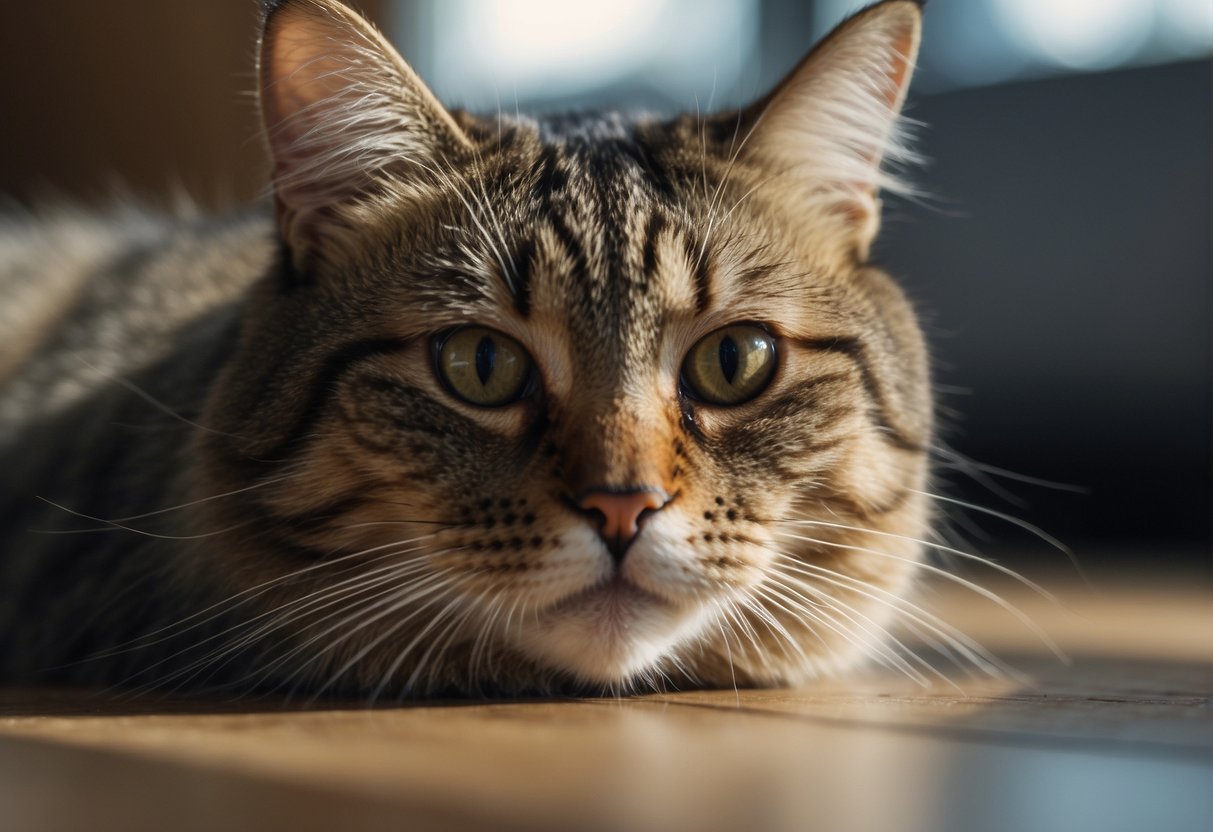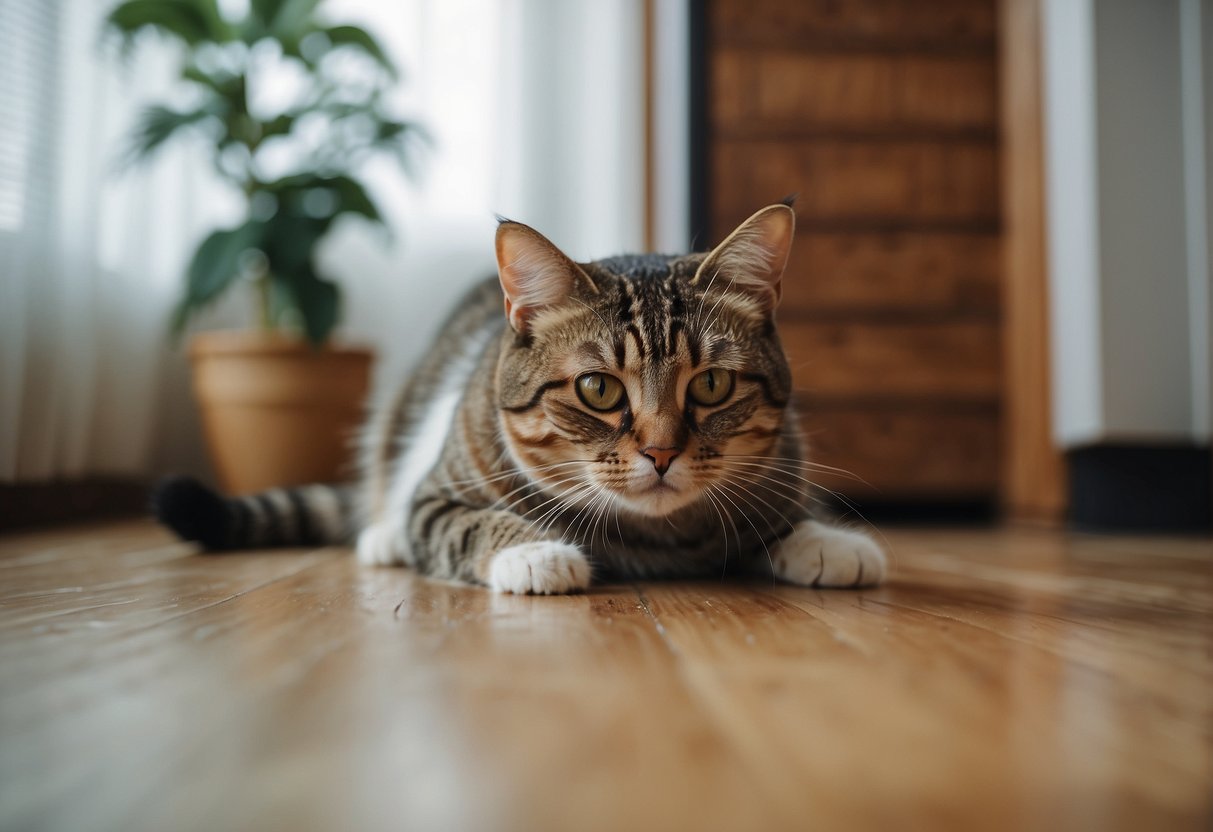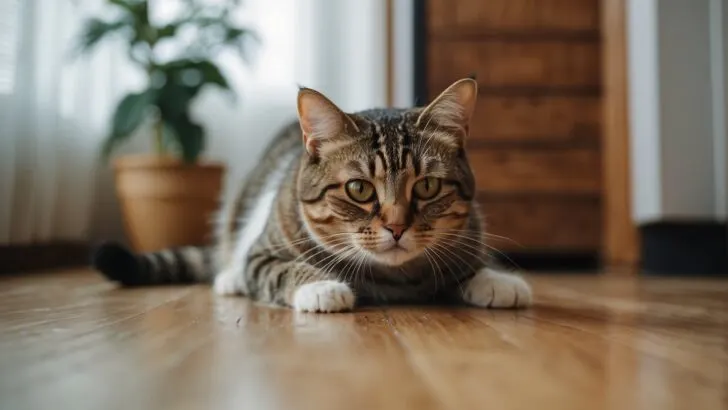Helping your cat manage hairballs is an important aspect of cat ownership. Hairballs are common among cats as a result of their grooming habits. When they groom themselves, they can ingest loose fur, which accumulates in their stomach to form a hairball.
Most times, your feline friend can handle these hairballs naturally, but occasionally they might need a bit of help to cough them up.

I’ve seen how uncomfortable it can be for a cat trying to deal with a hairball. Integrating a hairball control gel into their diet can be an effective way to ease this process.
Adding fiber to their diet is another tried-and-true method – whether through specialized hairball formula cat food or through natural supplements. Fiber helps move hair through the digestive tract, leading to less frequent and less severe hairball incidents.
Hairballs in Cats

When your cat grooms themselves, they may ingest hair which can form a hairball. Here’s how that happens and what you can be mindful of to ensure your cat’s health and comfort.
The Science of Hairballs
Hairballs, medically known as trichobezoars, occur as a result of your cat’s grooming habits. When your cat licks their coat, tiny hook-like structures on their tongue called barbs catch loose hair, which is then swallowed.
Most hair passes through the digestive system without issue, but some can stay in the stomach and form hairballs. Typically, a cat will expel these clumps of hair through vomiting.
Common Causes and Concerns
Grooming is an integral part of a cat’s routine, but when it becomes excessive, it may lead to more frequent hairball formation. Long-haired breeds are particularly susceptible due to their abundant fur. Monitor for signs like frequent hacking without hairball production, as it might indicate a blockage.
While most hairballs are a normal aspect of cat health, they can occasionally signal underlying health issues if accompanied by symptoms such as lethargy or changes in bowel movements.
Preventive Measures for Hairball Formation
Knowing how to prevent hairballs can save your feline friend from discomfort and potential health issues. Preventive measures are particularly crucial for long-haired cats who are more prone to hairball formation due to their abundant fur.
Proper Grooming Techniques
Regular grooming plays a vital role in the prevention of hairballs. Brush long-haired breeds daily to remove loose hairs and minimize the amount they ingest during self-grooming.
Short-haired cats benefit from a brushing routine as well, though it may not need to be as frequent. Invest in a quality brush or comb that is appropriate for your cat’s fur type.
- Long-haired cats: Daily brushing recommended
- Short-haired cats: Brush several times a week
Grooming is a bonding activity, and it helps reduce the shedding of fur that leads to the ingestion of hair.
Diet and Nutrition Factors
Your cat’s diet contributes significantly to hairball control. Look for cat food labeled as “hairball control” or those that are high in fiber, assisting the smooth passage of hair through the digestive tract.
- Increasing fiber: Aids in digestion
- Specialized cat food: Designed to prevent hairball complications
Occasionally, long-haired breeds might need supplemental fiber or oils to help manage their hairballs.
Treatment and Remedies for Hairballs
Helping your cat manage hairballs is critical for their comfort and health. While a hairball here or there is normal, frequent occurrences warrant effective treatment strategies.
Home Remedies
Grooming: Regular brushing reduces the amount of hair ingested by your cat. For long-haired breeds, professional grooming may be necessary.
Diet: Feed your cat specialized hairball control food which is formulated to improve coat health and reduce shedding.
- Fiber: Increased dietary fiber can help move hair through the digestive tract. Pumpkin or natural fiber supplements are options.
Lubricants: A small dose of a flavored petroleum jelly-based hairball remedy helps hairballs pass through the digestive system. You can also opt for a dab of olive oil as a natural alternative, but moderation is key.
Veterinary Solutions
Over-the-Counter Remedies: There are various hairball treatments available that act as intestinal lubricants. Before purchasing, consult your vet to ensure it’s the right choice.
Veterinary Care: Persistent hairballs might point to an underlying issue. A veterinarian can prescribe laxatives or other medications tailored to your cat’s needs.
Monitoring Your Cat’s Health
Keeping a watchful eye on your furry friend is imperative, especially if they are prone to hairballs. Recognizing the difference between normal hairball hacking and potential health issues can save your cat from discomfort or even life-threatening complications.
When to Seek Veterinary Attention
- Vomiting: Occasional hairball-related vomiting isn’t unusual, but if your cat is vomiting repeatedly and not just coughing, it’s time for a vet visit.
- Loss of Appetite: If your cat is avoiding food due to discomfort or an obstruction, this is a significant concern.
- Lethargy: Cats who are typically playful but suddenly seem listless need to be checked out, especially if it coincides with other symptoms.
- Persistent Cough: A cough that doesn’t lead to a hairball or continues for several days should be evaluated.
- Difficulty Breathing: Any change in breathing, wheezing, or rapid breathing is a sign to seek immediate help.
Other signs that warrant a veterinary visit include diarrhea, especially if there’s blood present, or signs of pain such as a hunched posture or restlessness.
Complications to Watch For
- Intestinal Obstruction: Hairballs can become stuck and cause blockages, which might need surgical intervention.
- Blood or a tar-like consistency in vomit or feces is alarming and should be addressed urgently.
Cats usually handle hairballs without much fuss, but keep an eye out for the symptoms discussed above.

My name is James, and welcome to FAQCats!
Along with our team of cat owners, expert pet enthusiasts, and pet professionals, we aim to write engaging helpful, engaging content about cats. At FAQCats we strive to provide content that’s accurate and fun to read. Our team writes about everything related to cats; even the most complex of topics. Through extensive research and caring for our own fur-pals, we’re able to provide something cat owners worldwide will love. Have a look around, and leave us feedback anytime!

